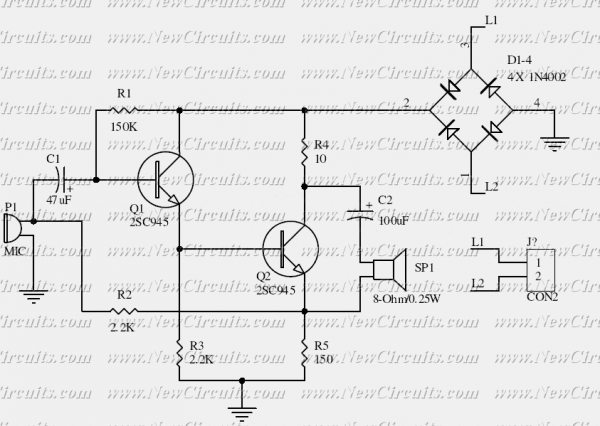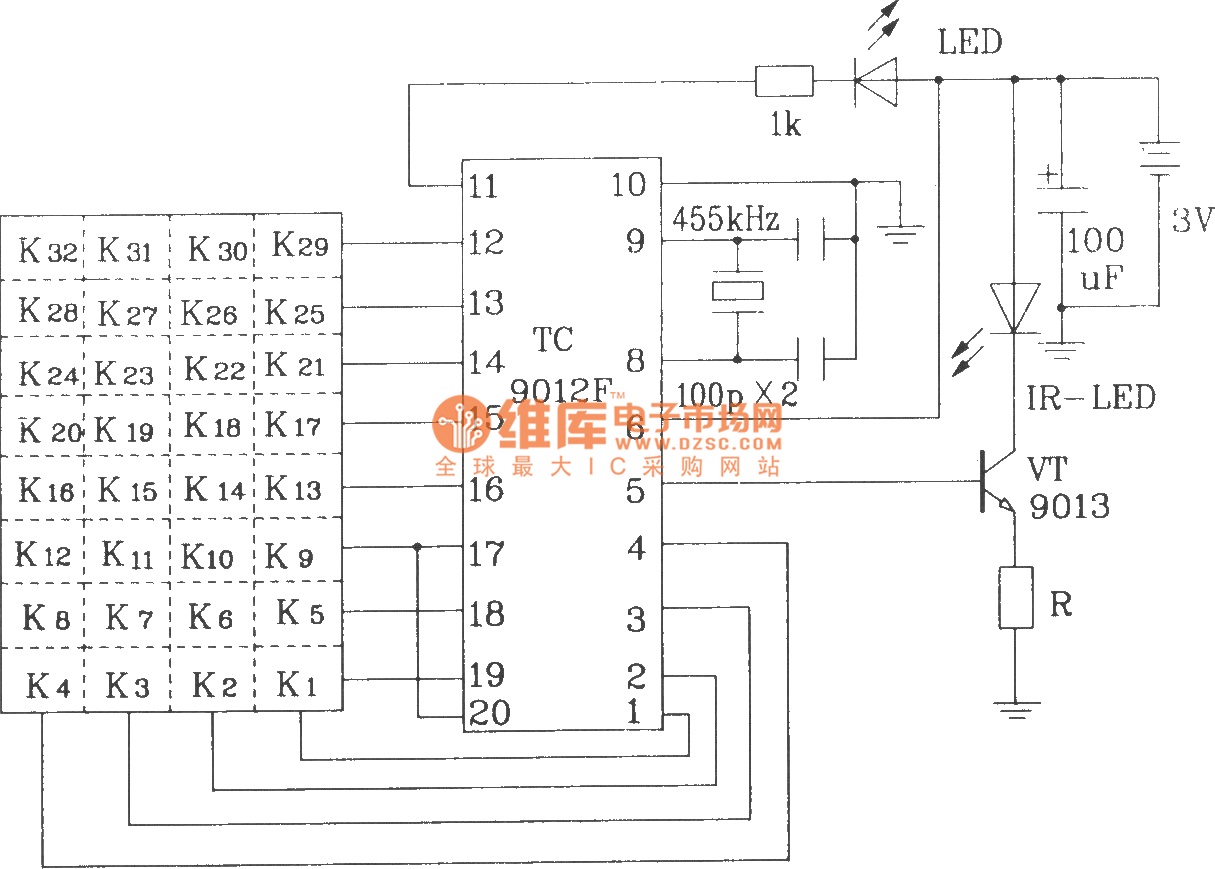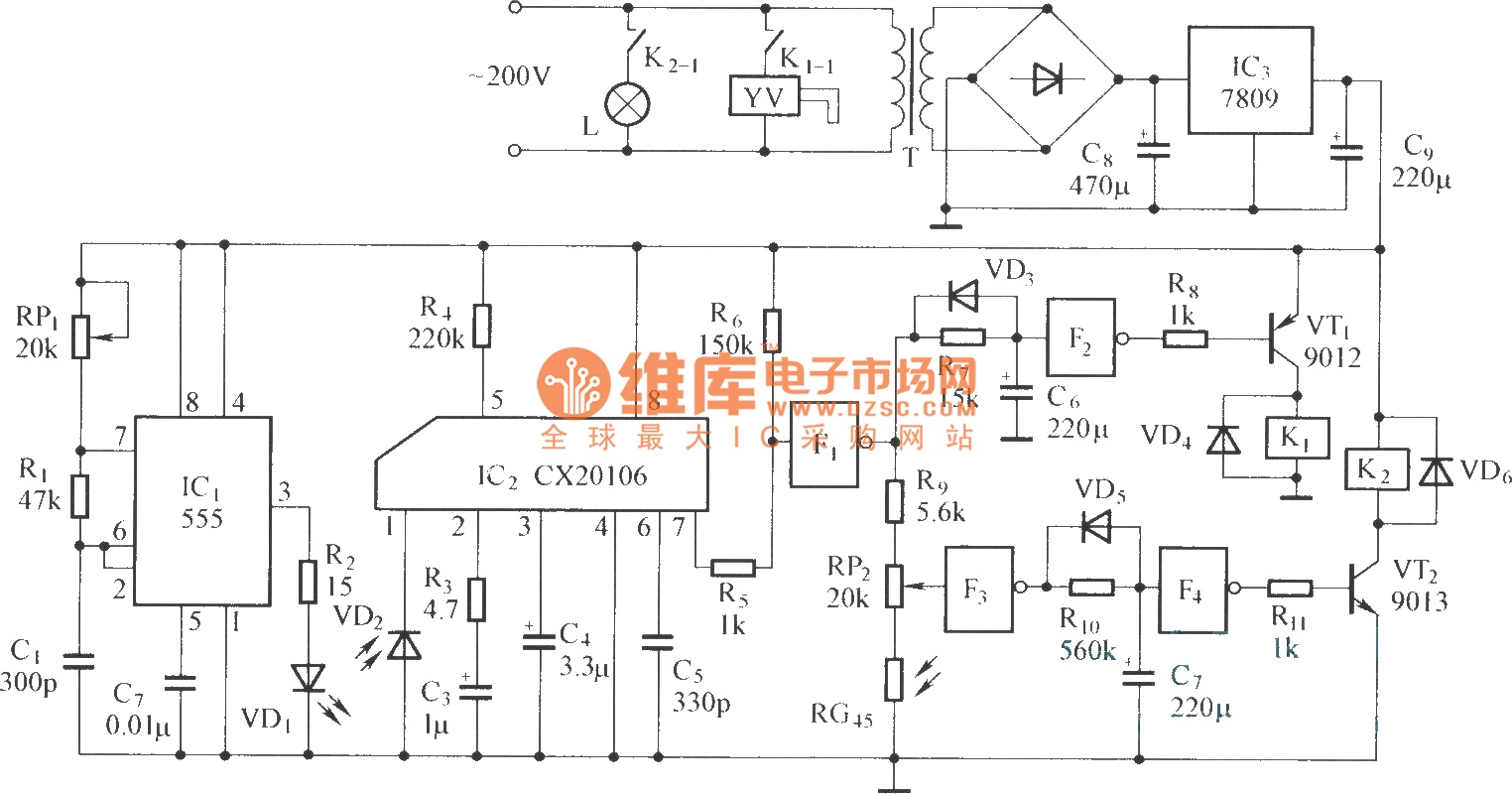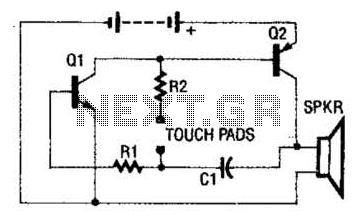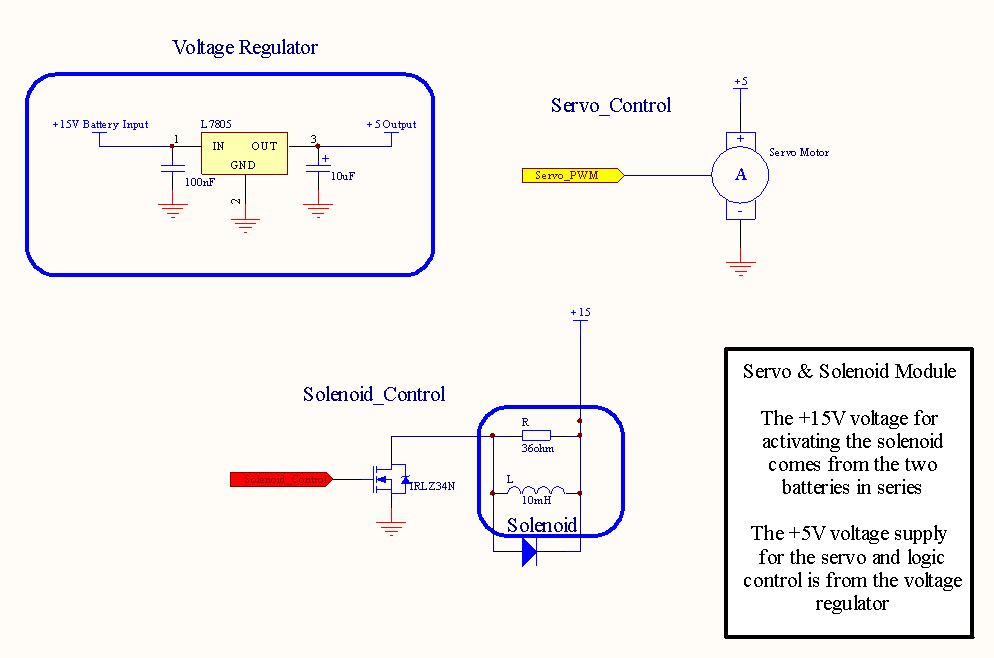
100v / 10ma regulator circuit
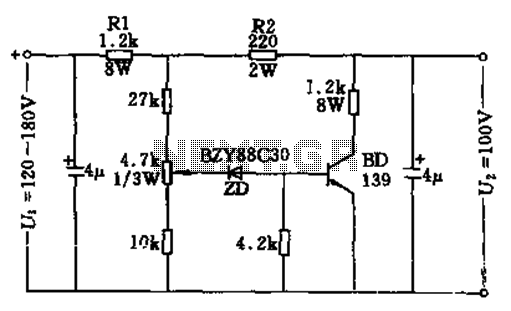
The circuit features no-load and short circuit protection mechanisms. To accommodate short circuit conditions, it is necessary to increase resistors R1 and R2 to allow for power dissipation; for example, R1 can be set to 1.2kΩ with a power rating of 20W, and R2 can be set to 220Ω with a power rating of 4W. Technical specifications include an output voltage (U2) of 100V, an output current (I2) of 10mA, and an input voltage (U1) range of 120V to 180V. The thermal resistance of the radiator is specified as Rthk = 20°C/W. The output voltage variation is noted as follows: for an input voltage (U1) of 120V to 180V under rated load, U2 is 1V; while under no-load conditions at the same input voltage, U2 is 1.5V. The output current (I2) ranges from 0 to 10mA (with U1 held constant) when U2 is 1.5V. The ambient temperature range is from 0°C to 60°C, with U2 indicating a variation of 150mV per degree Celsius.
The circuit is designed to ensure reliable operation under varying load conditions, incorporating both no-load and short circuit protection functionalities. The use of resistors R1 and R2 plays a critical role in managing power dissipation during fault conditions. Resistor R1, with a resistance of 1.2kΩ and a power rating of 20W, is positioned to limit current flow during a short circuit while allowing adequate heat dissipation. Similarly, resistor R2, rated at 220Ω and 4W, serves to further stabilize the circuit under fault conditions.
The output voltage (U2) is maintained at 100V, with the circuit capable of delivering an output current (I2) of up to 10mA. The input voltage (U1) is designed to operate within the range of 120V to 180V, providing flexibility for different supply conditions. The specified thermal resistance of the radiator (Rthk = 20°C/W) indicates that the design should effectively manage heat generated during operation, ensuring that the components remain within safe temperature limits.
Output voltage variations are carefully controlled; when the input voltage (U1) is within the specified range and the circuit is under rated load, the output voltage (U2) is approximately 1V. In contrast, under no-load conditions, the output voltage increases to 1.5V. This behavior is crucial for maintaining circuit stability and ensuring that the output current (I2) can be effectively regulated from 0 to 10mA, depending on the load conditions.
The ambient temperature range of 0°C to 60°C indicates that the circuit is suitable for a variety of operational environments. The output voltage's sensitivity to temperature, quantified as a variation of 150mV per degree Celsius, emphasizes the importance of thermal management in the overall circuit design. Proper heat dissipation strategies must be implemented to maintain performance and reliability across the specified temperature range.There are no-load and short circuit protection short circuit protection. To allow time short circuit, it must increase the resistors R1 and R2 allows power dissipation, such as R1 = 1.2k Europe, 20W; R2 = 220 Europe, 4W. Technical data: Output voltage: U2 = 100V; Output Current: I2 = 10mA; Input voltage: U1 = 120 ~ 180V; radiator thermal resistance: Rthk = 20grd / W; Output voltage variation: input voltage U1 = 120 ~ 180V when the rated load and U2 = 1V; U1 = 120 ~ 180V and no-load U2 = 1.5V; output current I2 = 0 ~ 10mA (U1 = constant) when U2 = 1.5V; ambient temperature 0u = 0 ~ 60 when Celsius U2 = 150mV / grd.
The circuit is designed to ensure reliable operation under varying load conditions, incorporating both no-load and short circuit protection functionalities. The use of resistors R1 and R2 plays a critical role in managing power dissipation during fault conditions. Resistor R1, with a resistance of 1.2kΩ and a power rating of 20W, is positioned to limit current flow during a short circuit while allowing adequate heat dissipation. Similarly, resistor R2, rated at 220Ω and 4W, serves to further stabilize the circuit under fault conditions.
The output voltage (U2) is maintained at 100V, with the circuit capable of delivering an output current (I2) of up to 10mA. The input voltage (U1) is designed to operate within the range of 120V to 180V, providing flexibility for different supply conditions. The specified thermal resistance of the radiator (Rthk = 20°C/W) indicates that the design should effectively manage heat generated during operation, ensuring that the components remain within safe temperature limits.
Output voltage variations are carefully controlled; when the input voltage (U1) is within the specified range and the circuit is under rated load, the output voltage (U2) is approximately 1V. In contrast, under no-load conditions, the output voltage increases to 1.5V. This behavior is crucial for maintaining circuit stability and ensuring that the output current (I2) can be effectively regulated from 0 to 10mA, depending on the load conditions.
The ambient temperature range of 0°C to 60°C indicates that the circuit is suitable for a variety of operational environments. The output voltage's sensitivity to temperature, quantified as a variation of 150mV per degree Celsius, emphasizes the importance of thermal management in the overall circuit design. Proper heat dissipation strategies must be implemented to maintain performance and reliability across the specified temperature range.There are no-load and short circuit protection short circuit protection. To allow time short circuit, it must increase the resistors R1 and R2 allows power dissipation, such as R1 = 1.2k Europe, 20W; R2 = 220 Europe, 4W. Technical data: Output voltage: U2 = 100V; Output Current: I2 = 10mA; Input voltage: U1 = 120 ~ 180V; radiator thermal resistance: Rthk = 20grd / W; Output voltage variation: input voltage U1 = 120 ~ 180V when the rated load and U2 = 1V; U1 = 120 ~ 180V and no-load U2 = 1.5V; output current I2 = 0 ~ 10mA (U1 = constant) when U2 = 1.5V; ambient temperature 0u = 0 ~ 60 when Celsius U2 = 150mV / grd.
